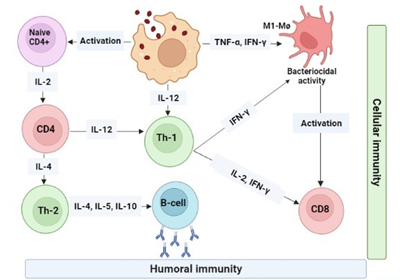Immune response and recent advances in diagnosis and control of brucellosis
Authors: Alyaa Elrashedy, Mohamed Gaafar, Walid Mousa, Mohamed Nayel, Akram Salama, Ahmed Zaghawa, Ahmed Elsify and Ali S. Dawood
Ger. J. Vet. Res
2022.
vol. 2, Iss. 1
pp:10-24
Doi: https://doi.org/10.51585/gjvr.2022.1.0033

Abstract:
Brucellosis is a zoonotic disease that has serious animal welfare and economic consequences worldwide. In mammals, this stealthy intracellular pathogen causes abortion and infertility, and in humans, it produces a terrible febrile illness that can progress into a long-term condition with serious implications. The pathogenicity of brucellae is based on their ability to survive and replicate in host cells, which allows them to escape from the immune system. The gold standard test for diagnosis, which demands competence, is still isolation and identification. Advancements in diagnostic procedures and screening of recently infected animals are required to achieve effective control. Despite their drawbacks, the most widely used vaccine strains to protect against Brucella infection and relevant abortions in cattle are B. abortus strains S19 and RB51 and in small ruminants is B. melitensis Rev1. However, there are no safe vaccine candidates for humans. Therefore, it is critical needs to improve vaccine production using advanced techniques such as subunit vaccines that are both effective and safe. Studying the overview of the Brucella immune response mechanism and advances in the diagnosis procedures allow more understanding of effective control strategies. The current review provides an overview on the immune response and updates on the diagnosis and control of brucellosis based on published literature on different search engines.
Keywords:
Brucella, Diagnosis, Immune response, Immune evasion, Vaccine, Control
Statistics:
Article Views: 3816
PDF Download: 111